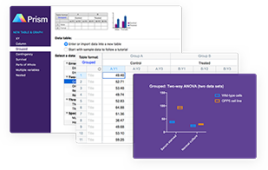Australia’s First GPU Cluster Ready for Research
 |
| The CSIRO GPU cluster during installation at the data center. CPUs and GPUs are linked together. The CPU handles the sequential part of the application and sends the computationally-intensive parts to the GPU. |
Technology that was originally designed to blast aliens in computer games is part of a new GPU computer cluster that will process research data and complement the supercomputing resources available to researchers at Australia’s Commonwealth Scientific and Industrial Research Organization (CSIRO), such as the recently installed NCI facility at the Australian National University.
The CSIRO GPU cluster launched on November 25, 2009, in Canberra and will allow CSIRO scientists to explore the use of GPU technology for parallel processing.
The first of its kind in Australia, the cluster is about the size of six large refrigerators and contains 61,440 compute cores. It will run Linux and Windows applications.
CSIRO Computational and Simulation Science leader John Taylor explained that the computer cluster combines central processing units (CPUs), like those in PCs, with more powerful graphics processing units (GPUs) to make it more efficient.
“GPUs have been around a while, hidden in your computer game console but now we’re seeing them in scientific computing,” Taylor said. “They were initially designed to render 3D scenes in computer games. GPUs speed up data processing by allowing a computer to massively multi-task through parallel processing.”
Per unit of processing power, a GPU cluster is typically less expensive and more energy efficient than a CPU-based supercomputer. GPUs are not just useful for image data, they can tackle big science challenges — processing petabytes of data and more, very quickly. Speeds of 30 to 70 times faster than CPUs are common.
Using GPUs to analyze complex research data is becoming a global trend in computing.
“It’s pleasing to see the first installation of a GPU cluster in Australia,” CSIRO Information Sciences Group Executive Alex Zelinsky said. “This cluster will be part of our family of high-end computers in CSIRO and important to our e-Research Strategy. It will enable CSIRO to, in a cost effective way, be globally competitive in addressing computational challenges for ‘big science’.”
It will be used for research in advanced materials, cloud computing, data and visualisation tools, genetics. Projects to be run on the cluster include:
• figuring out where tiny fragments of genetic code sit on a genome
• 3-D reconstruction of medical images from the Australian Synchrotron
• modeling the interactions between nutrients and plankton in the oceans
Thirty CSIRO scientists were trained earlier this year to learn how to code their experiments to run on the new GPU cluster.
“It requires a new approach to coding,” Taylor said. “You have to divide up each task in a way that makes best use of the extra processors. It’s like having to give instructions to 10 bricklayers building a wall, instead of one. We will be training others in the scientific community in how to use our facility. There’s plenty of interest from universities and government.”
Xenon Systems of Melbourne has installed the cluster in a Canberra data center.




